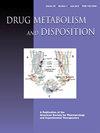利用生理药代动力学模型定量预测运动对药物药代动力学的影响
IF 4.4
3区 医学
Q1 PHARMACOLOGY & PHARMACY
引用次数: 0
摘要
运动会明显改变人体的生理功能,如增加心输出量和肌肉血流量,降低肾小球滤过率(GFR)和肝脏血流量,从而改变药物的吸收、分布、代谢和排泄。本研究旨在建立运动时人体生理参数数据库,并构建各生理参数变化与运动强度之间的关系式,包括心输出量、器官血流量(如肌肉血流量和肾脏血流量)、摄氧量、血浆 pH 值和 GFR 等。多项式方程用于说明生理参数(P)与作为运动强度指标的心率(HR)之间的关系。通过基于全身生理的药代动力学(WB-PBPK)模型和开发的生理参数数据库,对 100 名虚拟受试者用药后运动期间咪达唑仑、奎尼丁、地高辛和利多卡因的药代动力学进行了预测。WB-PBPK模型模拟结果表明,大多数观察到的血浆药物浓度都在模拟结果的第5-95百分位数范围内,估计的药物峰值浓度和曲线下面积也在观察结果的0.5-2.0倍范围内。敏感性分析表明,运动强度、运动持续时间、用药时间和生理参数的改变对药物药代动力学有显著影响,净效应取决于药物特性和运动条件。总之,利用所建立的 WB-PBPK 模型和生理参数数据库,可以定量预测药物在运动过程中的药代动力学。本文章由计算机程序翻译,如有差异,请以英文原文为准。
Quantitatively predicting effects of exercise on pharmacokinetics of drugs using a physiologically based pharmacokinetic model
Exercise significantly alters human physiological functions, such as increasing cardiac output and muscle blood flow, decreasing glomerular filtration rate (GFR) and liver blood flow, thereby, altering absorption, distribution, metabolism and excretion of drugs. In this study, we aimed to establish a database of human physiological parameters during exercise and to construct equations for the relationship between changes in each physiological parameter and exercise intensity, including cardiac output, organ blood flow (e.g. muscle blood flow and kidney blood flow), oxygen uptake, plasma pH and GFR, etc. The polynomial equation was used for illustrating the relationship between the physiological parameters (P) and heart rate (HR), which served as an index of exercise intensity. Pharmacokinetics of midazolam, quinidine, digoxin and lidocaine during exercise were predicted by a whole body physiologically based pharmacokinetic (WB-PBPK) model and the developed database of physiological parameters following administration to 100 virtual subjects. The WB-PBPK model simulation results showed that most of the observed plasma drug concentrations fell within 5th-95th percentiles of the simulations, and the estimated peak concentrations and area under the curve of drugs were also within 0.5-2.0 folds of observations. Sensitivity analysis showed that exercise intensity, exercise duration, medication time and alterations in physiological parameters significantly affected drug pharmacokinetics, and the net effect depending on drug characteristics and exercise conditions. In conclusion, pharmacokinetics of drugs during exercise could be quantitatively predicted using the developed WB-PBPK model and database of physiological parameters.
求助全文
通过发布文献求助,成功后即可免费获取论文全文。
去求助
来源期刊
CiteScore
6.50
自引率
12.80%
发文量
128
审稿时长
3 months
期刊介绍:
An important reference for all pharmacology and toxicology departments, DMD is also a valuable resource for medicinal chemists involved in drug design and biochemists with an interest in drug metabolism, expression of drug metabolizing enzymes, and regulation of drug metabolizing enzyme gene expression. Articles provide experimental results from in vitro and in vivo systems that bring you significant and original information on metabolism and disposition of endogenous and exogenous compounds, including pharmacologic agents and environmental chemicals.

 求助内容:
求助内容: 应助结果提醒方式:
应助结果提醒方式:


